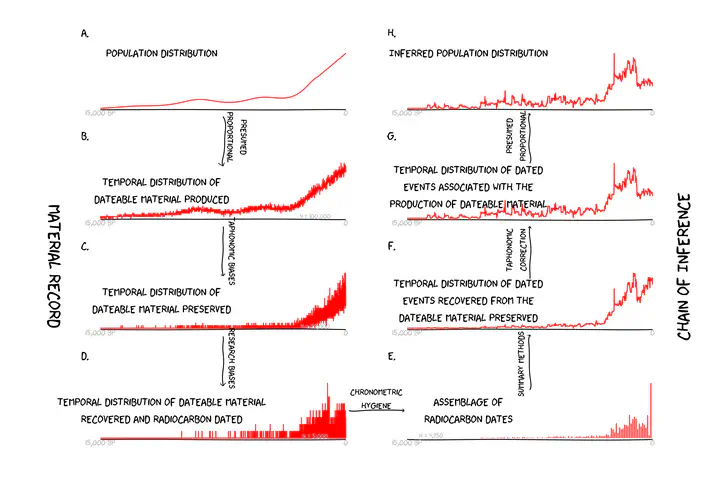Landscape taphonomy in the Bonneville Basin
PI: Daniel Contreras (U Florida), Brian Codding (U Utah)
 Figure by Daniel Contreras.
Figure by Daniel Contreras.This project develops new methods estimating past population sizes, in order to more accurately reconstruct past population dynamics. Accurately reconstructing past population dynamics is critical for addressing many key questions about the human past, including the origins of modern behavior, the emergence of agriculture, and the development of states. Although estimates of past population size are widely employed, current archaeological methods struggle to adequately account for the fact that the available records of past human habitation are biased by local geologic processes, which preserve sites of some ages while destroying others. This can lead to systematic bias in estimates of past population, erroneous reconstructions of past population dynamics, and mistaken interpretations of social processes. This project develops a novel approach that analyzes ages of archaeological sites relative to local frequencies of landforms of varying ages, using the Bonneville Basin (Utah and Nevada) as a test case. By providing a method that is capable of more accurately describing past populations, this project will enable improved analysis of past human responses to environmental changes as well as the potential impacts of human populations on past environments. Archaeologists increasingly turn to assemblages of radiocarbon dates as measures of past population sizes. Improving the accuracy of this technique by accounting for landscape change over time will allow us to explore the drivers of past population dynamics in the Bonneville Basin, especially the interactions between human demography, subsistence adaptations, land use, and environmental change. By developing a new methodology for addressing biases in assemblages of radiocarbon dates, illustrating the potential of the method through this Great Basin case study, and disseminating the tools that other researchers can use to replicate the approach, this project will open new possibilities in reconstructing past population dynamics. In addition, by standardizing an approach and providing computational tools for coupling the archaeological radiocarbon record and local landscape history recorded in landform ages, this work will enable further research that addresses compelling questions including the role of population dynamics in long-term sustainability and resilience, in the onset of the Anthropocene, and in such social transformations as the beginnings of agriculture and urbanism.